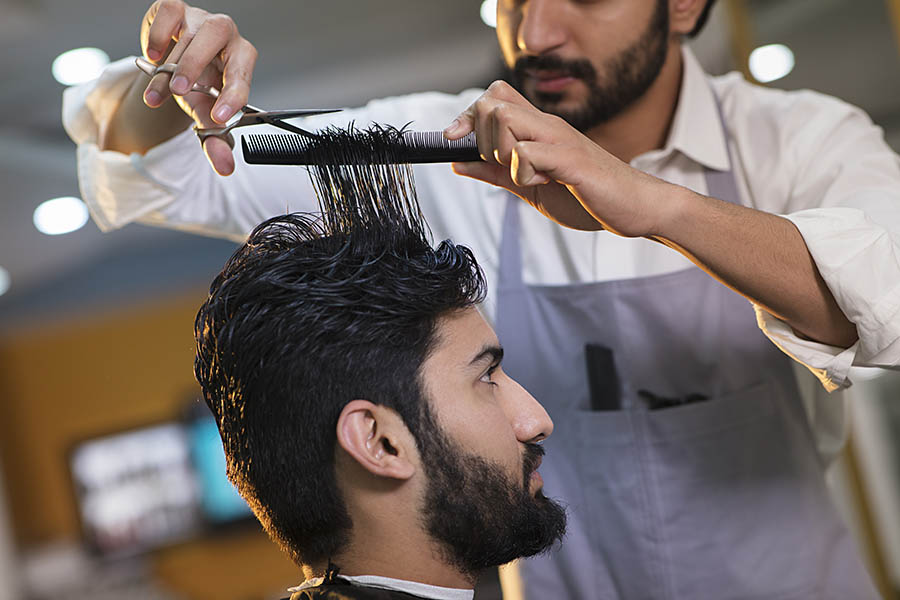HOW IT WORKS
Barber Shops

- Establishments primarily engaged in providing hair cutting and styling services for men.
Barber shops are establishments that provide grooming services primarily for men, although many now cater to all genders. Key characteristics of barber shops include skilled barbers who specialize in hair cutting, styling, and shaving, creating a comfortable and welcoming environment for clients. The target audience typically includes individuals looking for traditional grooming services, personalized attention, and a sense of community.
Common products and services offered at barber shops include haircuts, beard trims, shaves, and grooming products such as hair styling products and shaving creams. Barber shops may also offer additional services like facials, scalp treatments, and massage services.
Typical business models for barber shops involve walk-in appointments or scheduled appointments, with some shops offering memberships or loyalty programs to attract repeat customers. Notable trends and innovations within the industry include the resurgence of traditional barbering techniques, the incorporation of modern styling trends, and the use of natural and organic grooming products.
The unique value proposition of barber shops lies in their ability to provide personalized grooming services in a relaxed and masculine setting, often with a focus on building relationships with clients. However, barber shops may face challenges such as competition from unisex salons, changing grooming trends, and the need to adapt to evolving customer preferences and expectations. Overall, barber shops continue to thrive by offering high-quality services, expert craftsmanship, and a sense of tradition in a rapidly changing grooming industry.
Initial Stage: A barber shop identifies market opportunities by understanding the grooming needs and preferences of their target customers. This includes haircuts, beard trims, and other grooming services.
Product Formulation: The barber shop formulates its services to meet these demands by hiring skilled and experienced barbers who are trained in the latest trends and techniques. They may also offer unique services such as hot towel shaves or facial treatments to differentiate themselves from competitors.
Marketing and Promotion: The barber shop employs marketing strategies such as social media advertising, local partnerships, and word-of-mouth referrals to reach their target audience. They may also host events or promotions to generate interest and attract new customers.
Sales and Distribution: The barber shop utilizes walk-in appointments, online booking systems, and loyalty programs to streamline the sales process and enhance customer interactions. They may also offer retail products such as grooming tools or hair care products for purchase.
Post-Sale Services: The barber shop focuses on customer satisfaction by providing excellent service, personalized recommendations, and follow-up appointments. They may also offer complimentary services or discounts to encourage repeat business and build customer loyalty.
Continuous Improvement: The barber shop regularly seeks feedback from customers to improve their services and adapt to changing trends. They may update their menu of services, enhance their customer experience, or invest in training programs for their staff to ensure they are always meeting the needs of their customers.
In the realm of barber shops, daily operations face challenges such as managing resources like skilled barbers and quality products, communication and collaboration with clients and staff, process inefficiencies in appointment scheduling and customer service, inventory management of hair care products, quality control in haircutting techniques, technology integration for online booking systems, data management of customer preferences, and risk management related to safety and sanitation protocols. Strategies for overcoming these challenges include implementing efficient scheduling software, conducting regular staff training, investing in quality products, maintaining a clean and organized shop, utilizing customer feedback for improvement, and staying updated on industry trends. By addressing these operational areas effectively, barber shops can enhance their overall performance and customer satisfaction.
-
our barber shop struggled with managing appointments efficiently and keeping track of customer preferences. This led to long wait times and missed opportunities for personalized service. However, Webspad’s user-friendly tools helped us streamline our scheduling process and easily access client information, allowing us to provide a seamless and tailored experience for each customer. As a result, our operations have become more organized, leading to increased customer satisfaction and loyalty. We are grateful for Webspad’s support in addressing our day-to-day business needs and helping us enhance our overall performance.
Barber Shops Merchant Tweet / X

